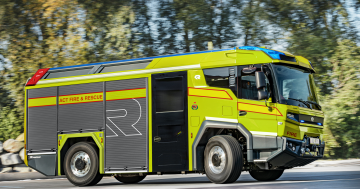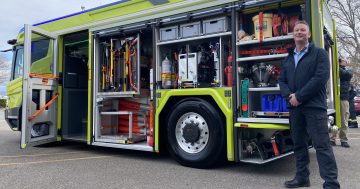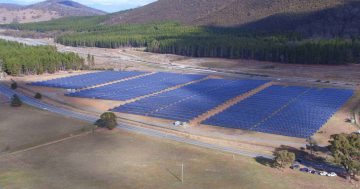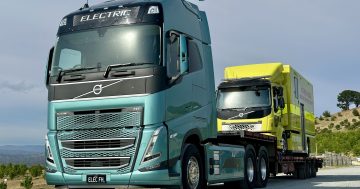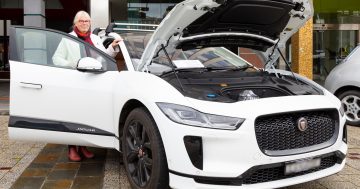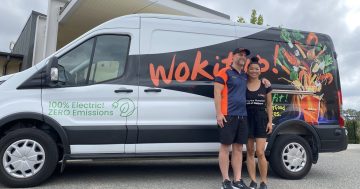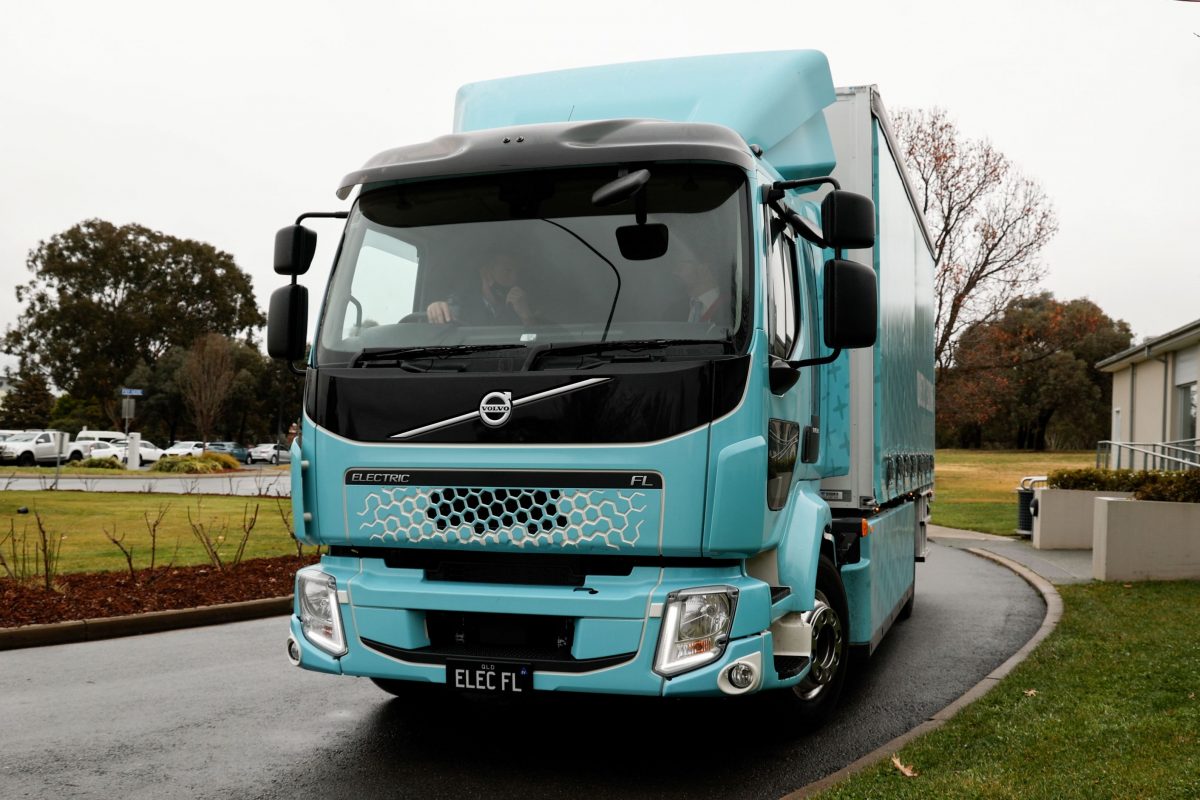
Seven Volvo emergency service vehicles will join the ACT’s fleet in the next four years. Photo: ACT ESA.
Up to seven zero-emissions emergency service vehicles could be making their way around the ACT’s roads as early as 2026 thanks to a $12.78 million-dollar contract with Volvo.
They won’t quite be ‘nee-naawing’ their way to put out fires around Canberra as the vehicles will most likely serve as support or logistic ones such as hook trucks and pod vehicles.
Volvo and the Emergency Service Agency will co-design a variety of vehicles that will be able to operate in a variety of roles across the ESA including the Rural Fire Service and the State Emergency Service.
The Swedish manufacturer has already committed to being fully electric for every car and every second truck it sells by 2030, making it an aggressive leader in that space.
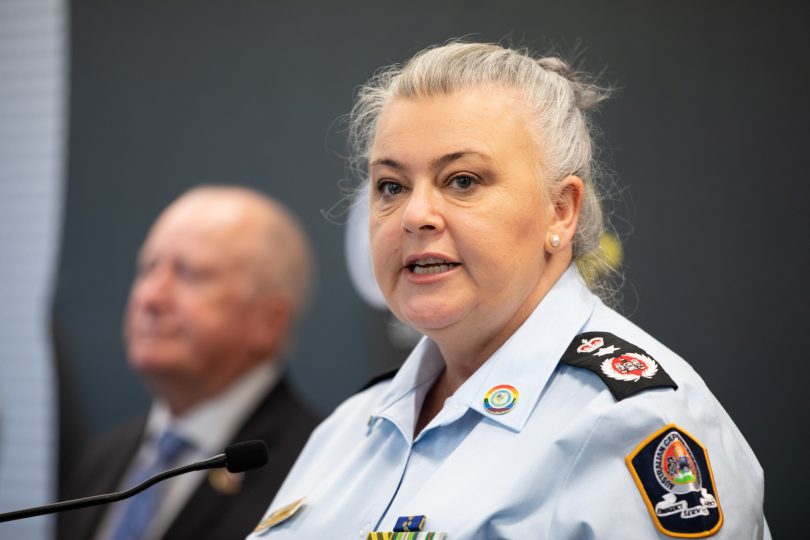
Commissioner Whelan believes the ESA’s fleet in the future could be entirely electric. Photo: Michelle Kroll.
The trucks will have to meet the operational requirements of the emergency services, which ESA Commissioner Georgeina Whelan said would be achieved through workshops with the design and logistics teams, and first responders.
Commissioner Whelan said it would be a phased approach to move the ESA away from internal combustion engines to electric ones but she hoped it would eventually be an entirely electric fleet.
She envisaged a phase-out of ICE vehicles taking place over 15 to 20 years.
In the first instance there would be a “dual response” where electric and traditional vehicles were taken to an incident.
“This would ensure no Canberrans’ lives are put at risk,” she said.
The Volvo contract follows an announcement last year that the ESA would soon take ownership of a Rosenbauer hybrid electric fire truck with a diesel back-up.
Initially, it was hoped that vehicle would be in the country in the first half of this year but that date has now been pushed out to the end of the year.
Training ESA staff members in protocols, operations and systems for the new truck will take some time, but once these have been worked through, the fire truck will hit the streets.
The latest project marks a national first, and comes only a day after the Territory government announced it would make a swathe of zero-emissions-vehicles-related reforms in the coming years, including changing the current weight-based car registration system to one calculated on emissions instead.
Earlier this week, the government announced it would ban new petrol light vehicles from being registered in the Territory from 2035 and would set an ambitious target of having 80 to 90 per cent of new cars sold by 2030 being zero-emissions.
Most of the reforms contained in the Zero Emissions Vehicle Strategy relate to light vehicles as they make up the majority of the ACT’s transport fleet.
But the government is also committed to tackling the more complex program of heavy vehicles.

Chief Minister Andrew Barr says the future is all-electric. Photo: ACT ESA.
Chief Minister Andrew Barr said electrification was the way of the future, not only for light vehicles but for a range of different vehicle types and uses.
“This is the direction the world is heading and the direction Australia is heading and it’s one where the ACT will be an early mover,” he said.
“The environmental benefits are clear and the vehicles are cheaper to operate over their lifetime.”
The government confirmed Volvo would have a program for battery recycling. The risk of lithium-ion batteries ending up in landfill has long been raised as an unwanted by-product of the move away from internal combustion engine vehicles to electric ones.
It’s not the only area the government is making progress in on the electrification of heavy vehicles.
An electric garbage truck is also being trialled on Canberra’s streets, and 12 electric buses will soon be carrying passengers from A to B.
